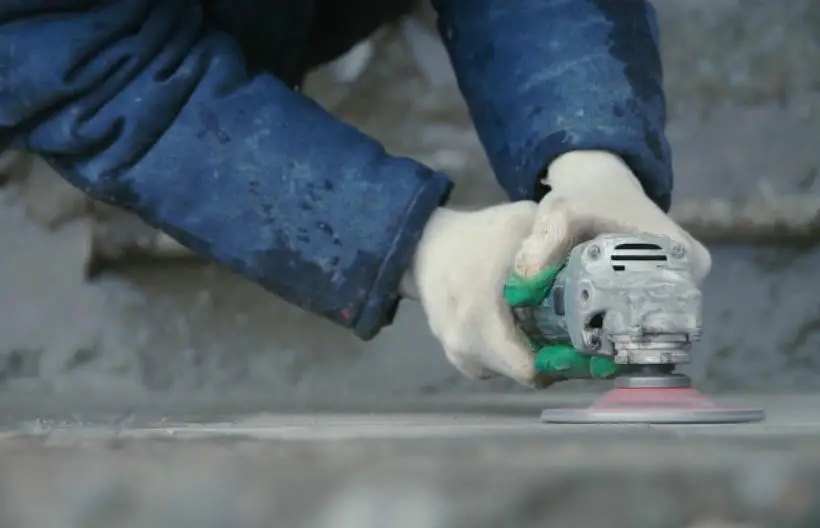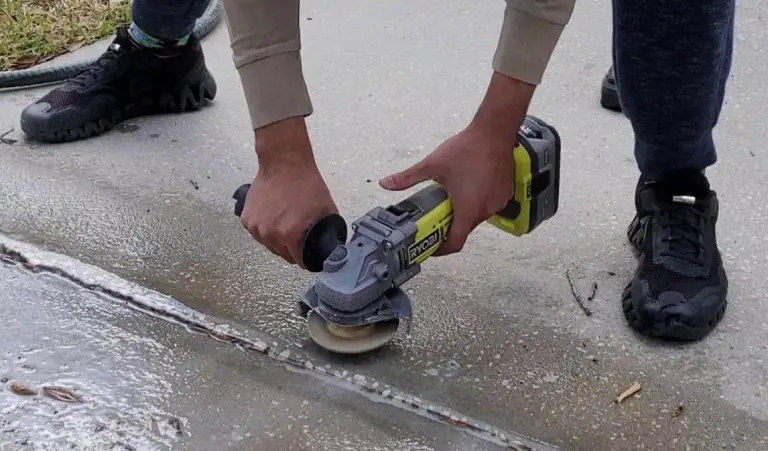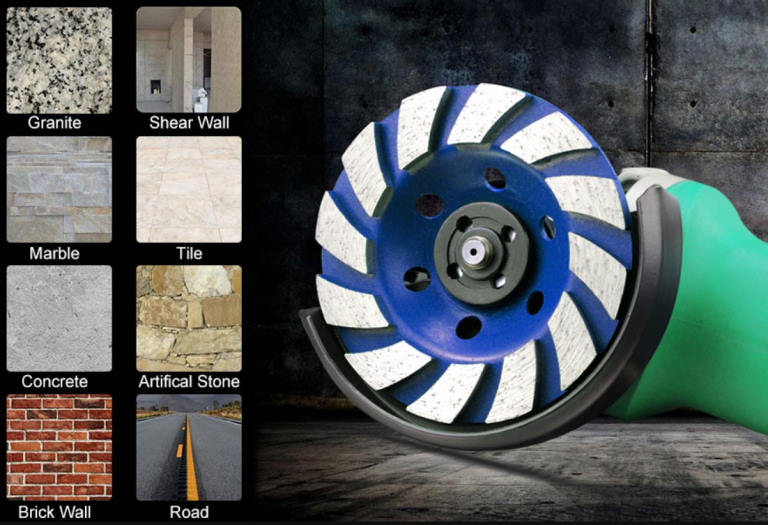Even the most seasoned angle grinder users are surprised by the tools’ versatility. They are commonly used to deal with metal materials. However, lesser-known to people, almost top-rated angle grinders can also handle rough materials like concrete.
So, do you want to know how to grind concrete with an angle grinder? Our article will show you that grinding rough concrete with an angle grinder is more intriguing and simpler than you may think.
Contents
Is An Angle Grinder Good For Leveling Concrete?
Generally, angle grinders are an ideal option for smoothing concrete because of the following reasons.
- Portable & Compact
Two of the key reasons why you should utilize them are their portability and compactness. With its small size, you can reach tricky areas and work with greater precision. This is ideal for smoothing or grinding concrete around doorframes and fixtures.
- Flexible
Unlike larger concrete grinders, angle grinders are not fixed on the floor, giving you more flexibility.
- Versatile
You should make the most out of your angle grinder’s versatility. It seems like the sky’s the limit to an angle grinder since the tool can be used in many ways as long as it is equipped with a suitable disc for the job.
Since you have bought a multiple-purpose tool like your angle grinder, it’s only reasonable to use it on as many materials as possible, which includes concrete.

How To Grind Concrete With Angle Grinder?
Tools To Prepare
Below is a list of tools you need to smooth concrete surfaces with your angle grinder:
- A full-face mask respirator to prevent airborne particles such as concrete and silica dust from entering your lungs.
- Knee pads for your knee protection when you kneel on a concrete floor. The ideal option is a professional-grade set of knee pads.
- Good hearing protection (a min NRR of 24 decibels) is needed since cutting and grinding concrete can emit a maximum of 104.8 dBA.
- Anti-fog safety glasses with wrap-around probably being a better choice.
- A portable heavy-duty vacuum cleaner with a sufficiently long power cord to roam around freely and a capacity of at least 8 gallons.
- A dust shroud that fits your angle grinder’s size, preferably one featuring a switch for quick release.
- A thinset removal tool will be helpful if you need to remove ceramic tiles from a concrete surface.
- Diamon polishing pads are excellent for polishing surfaces covered by stone slabs.
- A decently powerful pressure washer, which you should hire for a day instead of buying one.
- An angle grinder with a minimum of 10,000 RPB and an adjustable speed drive setting.
Steps To Smoothing Concrete With An Angle Grinder
There are 4 main steps to grind concrete with an angle grinder:
1. Clean The Surface

Sweep the floor or another surface clean with a broom to eliminate any lumps from gums, grease, and other stains. If it is required, consider vacuuming the surface or perhaps using a power washer.
After cleaning, there should be no residue that could cause the grinder to become stuck.
2. Ready Your Angle Grinder
It’s a good idea to utilize a dust shroud to avoid dust issues. Then, attach the disc to your angle grinder. Make sure that the tool has not been connected to an electrical outlet yet.
So, ensure that it’s turned off and securely attached to a diamond polishing pad or another similar pad. Moreover, protect yourself by wearing protective gear including kneepads, gloves, earplugs, and masks.
3. Grinding The Concrete Surface
If you have trouble reaching some corners, it’s a good idea to use a more compact tool for those areas.
Experts advise that you split the floor into different sections, and you should grind concrete edges first. If you choose to grind from the edges inwards, making circular movements may be the quickest approach to smooth concrete.
4. Take Care Of Any Flaws
It’s time you checked the outcomes of your work when you have finished grinding. Begin inspecting the surface and looking for any imperfections. If you notice a part where the results don’t satisfy you, grind it again.
Nevertheless, before you redo that part, remove your angle grinder’s dust shroud. The tool will contact better with the surface this way.
Lastly, mop, sweep, or vacuum the surface to get rid of any dust residue.
Pick A Suitable Concrete Grinding Wheel

Grinding or cutting concrete with an angle grinder requires careful selection of the right diamond disc. As a result, experts recommend taking time to learn about the benefits of various kinds and bonds. The most important consideration is that the diamond wheel should not damage your floor or surface beyond repair, especially if you intend to polish or perfect it.
It’s a good idea to test a specific diamond disc on the concrete type of surface you are about to work on. So, if you have the opportunity, test and validate that you have selected the correct diamond wheel.
You can also consult with the manufacturer for assistance in making the best decision. The outcomes will far exceed your expectation when you’ve found the best solution.
Some Drawbacks To Notice
Angle grinders have sufficient power, a compact size, and great mobility, which is suitable for grinding concrete. However, there are a few disadvantages to using them for leveling concrete surfaces that you should notice.
1. Too Small For Large Area
The ideal diameter for your angle grinder’s disc is between 4 and 7 inches to grind concrete. Nevertheless, the issue is that even with this size, they are not very large.
Therefore, you’ll need to be patient when leveling large rough concrete surfaces with these blades. If you want to accelerate the process, consider using a floor grinder instead.
2. Kneeling Down Makes You Uncomfortable
An angle grinder is small, so you need to move it around. As a result, grinding concrete floors with this tool will require you to kneel, which can be inconvenient.
Knee pads are a practical way to make oneself comfier, although smoothing large concrete areas may still be uncomfortable.
3. Need A Wet Attachment To Be More Efficient
Your angle grinder may require a wet attach for leveling concrete surfaces. This will speed up the cooling process while also ensuring that the blades do not overheat and wear down rapidly when in operation.
Safety Tips When Grinding Concrete

Your priority for angle grinder work should be safety, aside from achieving a smooth concrete surface. There are some precaution tips that you should take:
- Wear protective gear like a mask, glasses, and gloves at all times.
- Never change your grinder’s discs without first making sure that it is turned off. Accidental activation of your grinder can result in injuries.
- If feasible, use both hands to hold the tool. However, a tight grasp must be maintained on the handle at all times.
- Thoroughly test a new disc before using it on concrete surfaces to avoid any defects.
- Try to make sure that the debris falls to the ground to limit the chance of it getting into your eyes.
- Never work in the presence of others, especially if they aren’t wearing any protective gear.
- Ensure that there are not any nearby materials that can catch fire easily if they come into contact with the sparks.
Check more: Angle Grinder Vs Dremel: Which Tool To Choose?
Summary
With the help of our article, you can know how to grind concrete with an angle grinder properly. Like with other materials, this tool is ideal for leveling concrete surfaces too.
To guarantee the success and safety of your concrete grinding projects, you should remember our tips regarding the careful selection of a suitable diamond disc, some drawbacks to using an angle grinder, and safety precautions when carrying out the projects.
